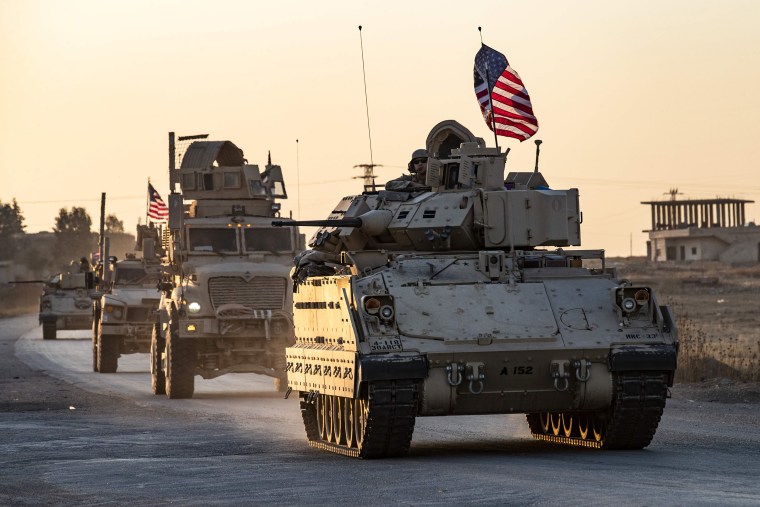WASHINGTON — The Islamic State militant group used the drawdown of U.S. troops from Syria and the Turkish incursion to regroup and strengthen its abilities to plan terror attacks abroad — and will likely rebound from the death of leader Abu Bakr al-Baghdadi, a new internal report from the Defense Department's watchdog says.
The report from the Pentagon's inspector general identified the Oct. 9 Turkish move into Syria — three days after a phone call between President Donald Trump and Turkish President Recep Tayyip Erdogan — as the tipping point. The invasion affected the U.S. mission against ISIS, the U.S. relationship with its chief military ally in the fight against ISIS — the Syrian Democratic Forces — and control of territory in northeastern Syria.
The departure of U.S. forces from areas of northeastern Syria, which followed the Turkish incursion, then created a void which Syrian regime forces and Russian forces filled, and gave ISIS more freedom to rebuild, according to the report.
"ISIS exploited the Turkish incursion and subsequent drawdown of U.S. troops to reconstitute capabilities and resources within Syria and strengthen its ability to plan attacks abroad," according to a Defense Intelligence Agency analysis of open sources, the report said.
In addition to Turkish forces, Russian and Syrian regime troops entered northeastern Syria in October. All three forces are unlikely to prioritize fighting ISIS, the report said. The largely Kurdish Syrian Defense Forces have pledged to continue operations against ISIS, but were attacked by Turkish forces. It was "unclear how many of the roughly 100,000 SDF forces were still conducting counter-ISIS operations in northeastern Syria" at the time of the report's publication.
The report also stated that the death of ISIS leader Abu Bakr al-Baghdadi during a late-October raid conducted by U.S. special operations forces in Syria was a "significant blow" to the terror group, but would likely have little effect on its ability to rebuild.
The Turkish incursion was also followed by the escape of between 100 and 200 prisoners from ISIS detention camps in northeastern Syria. The detention camps, which hold approximately 10,000 ISIS prisoners, are run by the SDF, but funded entirely by U.S. and coalition support.
"The SDF intended to maintain control of the ISIS detention centers in northeast Syria, albeit with fewer prison guards," the report said.
Stabilization and humanitarian efforts in the region were also hindered by the October events. Thousands fled or were evacuated from two large camps for displaced people in Syria as the Turkish forces entered, including as many as 800 people affiliated with ISIS. U.S. forces withdrew from providing security at camps as well, with the SDF continuing to provide security at camps for displaced people, like the massive Al Hol camp, but "in a more limited fashion."
"ISIS supporters in the [Al Hol] camp could exploit the decreased security posture," defense officials told the inspector general. But they said they could not confirm if that was happening because their knowledge of activity there is limited without U.S. forces in the camp.
ISIS is continuing to rebuild in Iraq as well, the report noted, but is struggling to synchronize its efforts and acquire terrain there.
The inspector general report covered a larger time period than its typical quarterly report on U.S. efforts to defeat ISIS in Iraq and Syria, "due to the significant events that took place in Syria in October 2019." Typically, such a report would only have covered the period of July through September. The new report stretches almost an extra month to cover those significant events.


